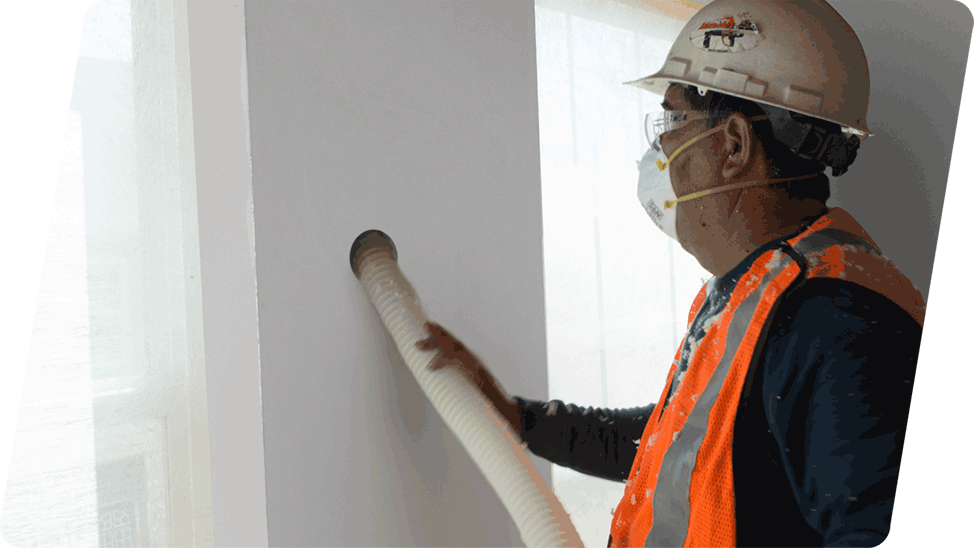We get questions all the time here at JM about insulation. From what to do if your insulation should get wet to how to keep the volume down with sound reducing insulation. So, when one of our customers ended up with insulation all over the yard, we knew we had a few tips to help. Here’s the question we received:
“This may sound like a strange question, but when using JM blow-in fiberglass insulation into the wall from outside, should I have insulation inside the house? Is it normal to end up all over furniture, beds, etc.? Should I have it all over the yard, shrubbery beds and even out over my yard? How should it be cleaned? Thanks!”
The quick answer? No, you shouldn’t have it everywhere. For those unfamiliar, the term blow-in insulation (or loose-fill insulation) refers to loose material that has a good insulating R-value. The loose material is blown-in areas such as stud or joist cavities and is commonly used to cover attic floors. Made from a wide variety of materials, blow-in insulation is great for covering hard-to-reach areas within attics or other tricky spaces within a home. JM has two blow-in fiberglass insulation options; our Climate Pro® Formaldehyde-free™ blow-in fiberglass insulation, which offers thermal and sound control along with fire-resistance, installed by contractors and our Attic Protector® Formaldehyde-free™ premium blow-in fiberglass insulation which offers effective thermal and acoustical performance designed specifically for the attic available at retail for DIY and Pro applications.
Based on the context of the question above, this customer hired a contractor to install our Climate Pro Formaldehyde-free blow-in fiberglass insulation in a “drill and fill” application. This installation of the product is when holes are drilled in a finished wall of a home and the insulation is blown into the wall cavities. This is often used in instances where homeowners are trying to update old structures that originally didn’t contain insulation.
The problem with this technique is that overfilling is a possibility; ideally, the product would be installed with a minimal amount of overfill/overspray. If the product was installed from the outside, there shouldn’t have been any material on the inside of your home unless there was a hole on the inside where air could have gotten through. If there was an excessive amount of material in the yard and trees, this lends itself to be an installation issue.

The good news is that clean-up is safe and easy. The fastest and most efficient way is to vacuum up the product. There’s no need for a special HEPA filter either. For outside cleanup, using a rake is effective but a shop vac works just as well pending the scenario. However, while the type of fiberglass used for this application is safe, there could be an itch associated with coming into contact with the product. Therefore, we suggest you wear the appropriate safety gear, such as safety glasses, long sleeves and gloves, before cleaning. Because of this, any soft materials, such as bedding, should be washed to ensure all fibers are removed.

